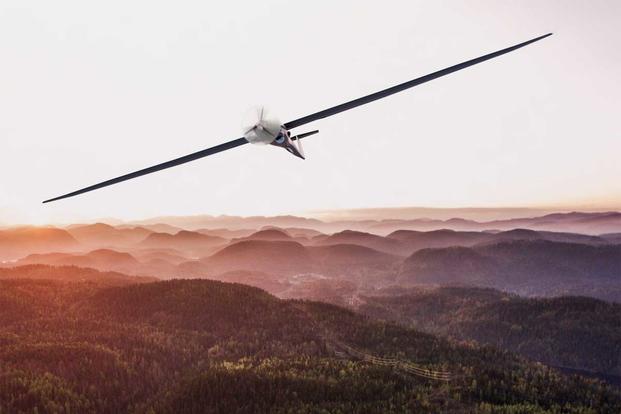The U.S. Air Force just flew an unmanned aircraft for roughly two days straight, demonstrating the drone's ability to take off and land by itself and cover extensive ground on intelligence-gathering missions.
The Air Force Research Laboratory's Center for Rapid Innovation says it recently tested the Ultra Long Endurance Aircraft Platform (Ultra LEAP) at the Dugway Proving Ground, Utah, which could lead the service to begin operating it as early as next year. Initial flight tests began in Feb. 2019, it said.
"As the Air Force balances current readiness with long-term modernization, Ultra LEAP represents an affordable approach that supports both existing and future force needs," said Maj. Gen. William Cooley, AFRL commander, in an Air Force release.
According to an illustration of the unmanned aerial vehicle, Ultra LEAP has a vast wingspan for additional lift, similar to the Air Force's RQ-4 Global Hawk.
Related: $180 Million Navy Drone Damaged in Middle East
While information including the dimensions of the drone, its maximum speed and its flight ceiling has not been disclosed, the service describes it as "a high-performance, cost-effective, sport-class commercial airframe" that has been converted to include "anti-jam GPS and full global operational access via a satellite-based command and control and high-rate [intelligence, surveillance and reconnaissance] data relay link."
"Accomplished after only 10 months of development by our AFRL [and] industry team, today's two-and-a-half-day Ultra LEAP mission is a significant milestone in solving the tyranny of distance problem for ISR systems," Dr. Alok Das, AFRL Senior Scientist and the CRI Director, said in a statement. "It will provide immediate benefit to our warfighters while at the same time paving the path for future low-cost, multi-day endurance ISR systems."
The drone's configurations also allows for a variety of custom ISR sensors and tools to "support extended missions," according to the release.
Because it's a commercial drone, spare parts or tools can be manufactured much more quickly if needed.
"This way, the U.S. military will save money without sacrificing reliability and maintainability," added Paul Litke, the AFRL project engineer lead.
While the Air Force has put more emphasis lately on drones that will one day be able to swarm, use artificial intelligence or work alongside fifth-generation fighters such as the F-35 Lightning II, the latest Ultra LEAP test may signal a shift in the Air Force's priorities toward investing in long-endurance drones for persistent surveillance.
At the same time, the Air Force is pursuing cheaper systems that can incorporate a larger variety of sensors and technology. For example, the XQ-58A Valkyrie drone, which the service is experimenting with now, runs between $2 million to $3 million.
The service has stretched out the service life of the long-endurance Global Hawk, using it for roughly 20 years. In 2014 an RQ-4 Block 40 variant, which tracks radar and moving targets, beat records when it undertook a 34.3-hour flight, marking the longest unrefueled flight by an Air Force aircraft, according to service officials.
But with a unit cost of $130 million in 2013 and climbing, the Global Hawk is one of the most expensive drones the service uses.
In 2007, the Air Force added the MQ-9 Reaper -- which has the ability to carry strike weapons -- to its inventory. Its cousin, the MQ-1 Predator -- also in service for about 20 years -- was retired last year. As a result, the larger, faster Reaper began expanding its mission set.
But developing the Ultra LEAP "with this level of endurance is an incredible achievement for future warfighting and battlefield success," Litke said.
AFRL will next test the drone at short takeoff and landing distances that would support deployments in austere locations, officials said.
-- Oriana Pawlyk can be reached at oriana.pawlyk@military.com. Follow her on Twitter at @oriana0214.
Read More: Navy EOD Commander Sacked Over Loss of Confidence












